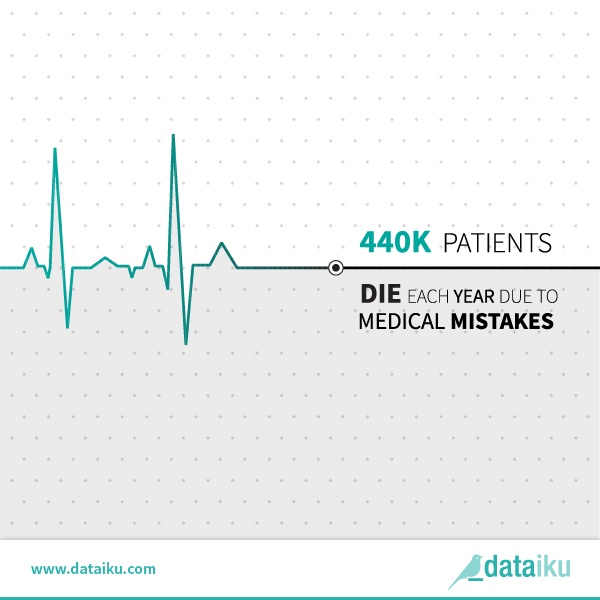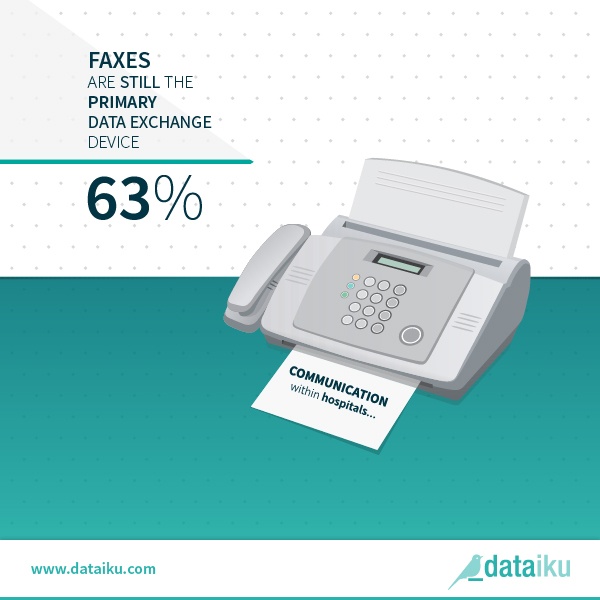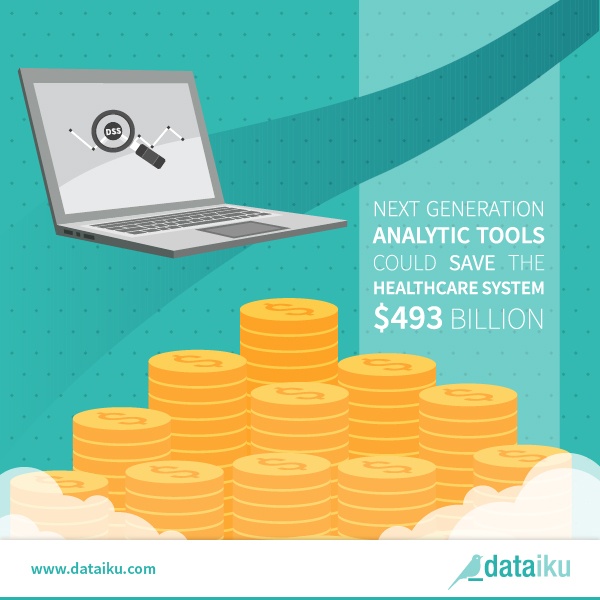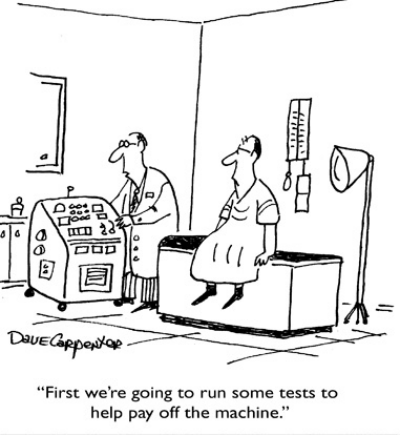America is living in a healthcare paradox. The country has received more Nobel Prizes in medicine than the rest of the world combined since 1966, yet it was also ranked lowest by the Organization for Economic Cooperation and Development (OECD) in clinical efficiency.
Think about it, what other country can boast the most advanced hospitals in the world and yet kill 440,000 of its patients in hospitals through medical errors? That’s comparable to the entire population of Miami being wiped out every year because of medical errors!

These figures are more concerning still when you consider the fact that the U.S. has the highest health expenditures per capita among developed countries. In a year, the government spends on average $8,500 on healthcare per American. The second highest spender is almost $3,000 behind with $5,700 per Canadian spent per year. Yet perhaps the most telling statistic is simply the fact that fax is still one of the primary forms of communication in U.S. healthcare.
Transitioning to a Value-Based System
As you probably already know, the U.S. has recently begun its transition to a Value-Based Care System (VBC). VBC (as opposed to Cost-Based Care [CBC]), as you probably already know, is the principle behind the reimbursement system in the U.S. It refers to the value equation: Quality over Cost over Time. So, for patients, it means effective care at low cost. Value-Based Payment is slowly displacing CBC. Under this plan, 90% of all traditional CBC Medicare payments should be tied to quality or value, and 50% would be tied to alternative payment models by the end of 2018.

Data Analytics Key to Achieve Care Coordination
All these major changes necessitate a greater level of interoperability between payers, providers, and fiscal intermediaries at a national and federal level. The goal of this new interoperability is to create a unified system where data flows from the payer to the provider, allowing for better care and cost reduction.
The core fundamentals of this type of model are the focus on care coordination and collaborative leadership across networks. These use of big data analytics is a major contributor to the success of that accountable care.
And healthcare data is flowing in from everywhere: social media, website data, machine-to-machines data, transactional data, biometric data, genomic data, and human-generated data. The HITECH Act of 2009 has sought to promote the adoption and meaningful use of health information technology to put order in that data. Patient data is now required to be electronically available in an effort to establish a healthcare system based on the principles of VBC.
A Major Limit: Little (If Any) Interoperability
However, healthcare in the U.S. is characterized by a high degree of fragmentation. Hospitals have dozens of proprietary tools, siloed systems, and antiquated methods in place that generate severe inefficiencies. Imagine yourself printing datasets out on a sheet of paper and crossing the street to transcribe them on another hospital’s system. That is the kind of thing that happens. Today. In the U.S.
There is one possible reason for this: as of March 2015, there were 779 health IT vendors. Most of them are selling self-contained systems: intentionally siloed computing systems. That’s why a US hospital can have an average of 10 different Electronic Health Records. This makes data use and sharing far from optimal.
Healthcare Industry Lagging Behind Innovation and Cost Savings
What is the point in having data if you can’t properly use It? Indeed, many believe this data shortcoming has impeded innovation in healthcare. Skype has been up and running since 2006 but telemedicine is still a far-off prospect. The Internet of Things (IoT) is a booming market, but you still need to go check your sugar rate at the hospital twice a week. We can forecast weather, but patient forecasting is still based on historical averages.

Data sharing and use are far from being optimal
Don’t worry, all is not lost. We’ll tell you soon how Dataiku DSS plans to save yearly the U.S. healthcare system $450 billion.
How to Help the Healthcare System Become Data-Driven
According to a KPMG Study (April 2015), health system analytics is about to grow exponentially, but respondents cite three significant barriers:
-
Having unstandardized data in silos (37%)
-
Lack of technology infrastructure (17%)
-
Data & analytics skills gap (15%)
It’s time for a change, and Dataiku is designed to address these three challenges. We are indeed convinced that healthcare is an information business where setting up interoperability between data flows is crucial to deliver live analytic learning. That’s why Dataiku has been working with healthcare providers and payers aiming at delivering the best possible treatment at minimal cost.
What We Do in Healthcare
At Dataiku, we think healthcare providers and payers should focus on what truly matters: delivering the best possible patient care while minimizing costs.
-
That’s why Dataiku can clean, aggregate, and transform data from numerous health IT systems. It also frees up your business analyst teams to pursue more development opportunities.
-
In a healthcare market where VBC is the dominant paradigm, Dataiku enables its customers to maximize service value through fraud detection, staffing optimization, physician profiling, process improvement, churn reduction, predictive maintenance , no-show forecasting, predicting doctor drug prescriptions, and developing indicators using healthcare data.
-
Healthcare providers will be able able to deliver better care with Dataiku helping them to optimize disease management, improve patient safety, and expand potential for precision medicine (see one example of Dataiku working toward better disease management ).
-
Finally, Dataiku can help any healthcare players to develop health knowledge and awareness in strengthening consumer engagement, developing advanced population health management, and favoring open transparency.
Healthcare is an information business where the difference between life and death is at stake. The possibilities for predictive analytics are endless and are indicative of the world we live in where vast quantities of raw data can be accessed, cleansed, collected, parsed, formatted, and elegantly visualized in a meaningful way.





